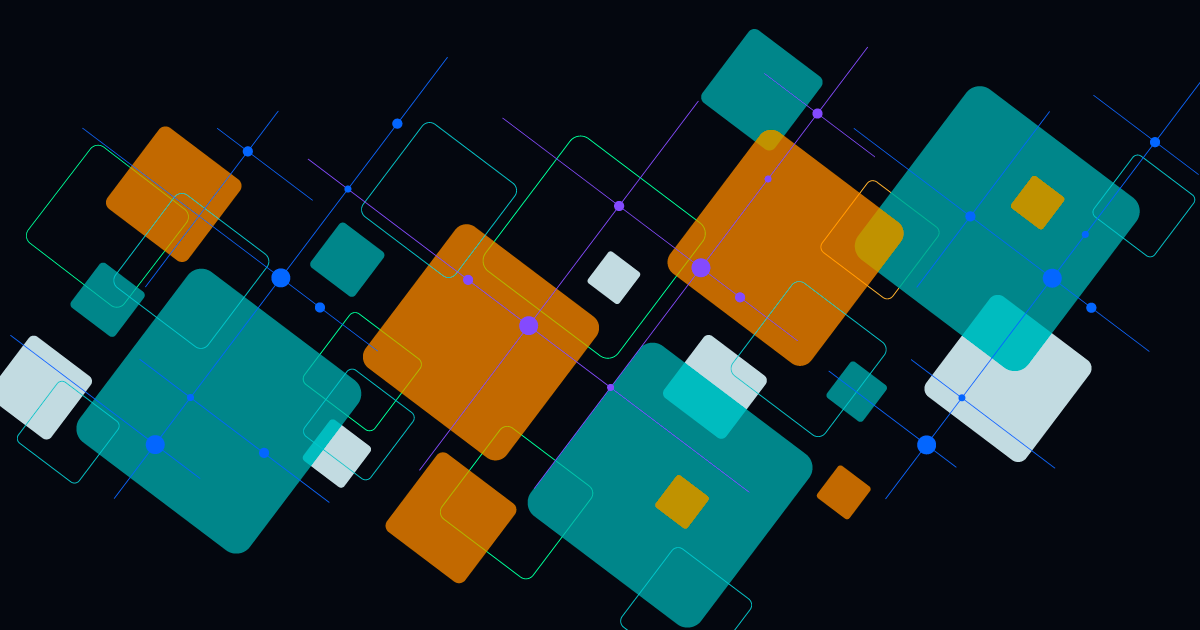
AI-Governed Infrastructure: The Next Phase of IT Operations Management
Subscribe to receive the latest content and invites to your inbox.
The automation era brought speed. The AI era brings judgment. And now, a new chapter is unfolding—one where infrastructure no longer waits for human instruction but instead governs itself.
We're entering the age of AI-governed infrastructure, the natural evolution of AI operations management. It's not about replacing people; it's about eliminating inefficiency, unlocking resilience, and empowering IT systems to heal, respond, and optimize on their own.
This shift is already underway. Infrastructure teams are no longer content with alerting tools that flag issues; they want systems that fix them. Network teams are no longer satisfied with dashboards; they need orchestration engines that detect anomalies, resolve them, and report back. The question is no longer whether AI belongs in operations; it's whether your operations are ready for AI that acts autonomously.
Why AI Governance Is the Next Frontier
Modern enterprises are built on sprawling, hybrid infrastructure: cloud-native services, legacy on-prem systems, edge environments, SaaS integrations, and global networks all operating in parallel. Managing this complexity is no longer about visibility alone—it's about actionability.
Traditional automation helped by codifying known processes. A server goes down? Restart the VM. A threshold is breached? Trigger a notification. But as environments grow more dynamic and the volume of signals increases, pre-defined workflows begin to crack. Teams need systems that can make decisions in context, at speed, and without always waiting for human input.
That's where AI-governed infrastructure steps in. These systems don't just execute; they analyze, adapt, and act.
What AI-Governed Infrastructure Looks Like in Practice
AI-governed infrastructure isn't a single tool. It's an operational architecture that blends observability, automation, and AI reasoning into one cohesive layer. It shifts IT operations from managing alerts to managing outcomes. Here's how that looks across key domains.
In Infrastructure & Operations (I&O): Self-Healing Becomes the Standard
Instead of alert storms, AI-governed environments surface only what's necessary and act on it automatically. Servers that crash are restarted. Configuration drift is detected and corrected. Expired certificates are renewed before breaking integrations.
The AI layer understands system baselines and deviations. It doesn't just inform human agents; it replaces entire triage workflows. When remediation is needed, it's handled without intervention. This is true self-healing infrastructure, and it marks the end of reactive firefighting.
In Network Operations (NetOps): Anomalies Are Actionable
AI-governed networks don't just generate logs; they take action. If bandwidth spikes in one region, traffic is rerouted. If a configuration change in one device triggers performance degradation, it's rolled back. Policy violations are automatically corrected, and device compliance is continuously enforced.
The AI layer correlates telemetry across routers, firewalls, and cloud networks to detect complex patterns humans would miss. More importantly, it closes the loop, resolving performance issues or security gaps in real time, without relying on ticket escalation.
In Service Delivery: Friction Disappears Before It Starts
AI-governed service management means fewer tickets, shorter queues, and invisible resolution. Password resets, access requests, and service restarts happen before the user opens a support ticket. Chatbots don't just guide users; they fix problems. Behind every interaction is an orchestration engine driven by intelligent agents.
Over time, these systems learn from past tickets, detect common patterns, and proactively solve recurring issues. It's the difference between responding to users and eliminating their need to ask for help in the first place.
From Static Workflows to AI-Led Decisioning
At the heart of AI-governed infrastructure is a simple but transformative shift: from static “if-this-then-that” playbooks to dynamic, AI-led decisioning. This evolution changes how systems operate across three key dimensions:
1. Contextual Intelligence
AI doesn't just act; it understands. It knows when a CPU spike is normal and when it's not. It factors in time of day, historical patterns, and interdependencies across services. Instead of treating every alert the same, it prioritizes and acts based on business impact.
2. Autonomous Execution
Workflows are initiated, not just suggested. AI agents trigger resolutions directly: restarting services, patching systems, or updating permissions. Exceptions are flagged, but routine fixes are executed end-to-end without a human in the loop.
3. Feedback Loops for Continuous Learning
The more AI governs, the more it learns. Successful resolutions improve future recommendations. Failure patterns are stored and avoided. Over time, the system becomes smarter, faster, and more efficient, continuously reducing the need for manual intervention.
Why AI-Governed Infrastructure Matters Now
The promise of AI operations management has always been about more than visibility; it's about velocity, precision, and resilience. As demands on IT continue to grow, organizations are recognizing that reactive, rule-based systems simply won't scale.
AI-governed infrastructure matters now because:
- Workloads are scaling faster than teams: Manual triage can't keep up with real-time service expectations.
- Downtime is more expensive than ever: Every delay impacts revenue, reputation, and customer experience.
- The IT talent gap is widening: Skilled engineers should solve novel problems, not waste time on routine tasks.
By embracing governance through AI, organizations ensure that infrastructure remains stable, performant, and secure even as complexity accelerates.
Building Toward AI Governance Without Starting Over
Adopting AI-governed infrastructure doesn't require a rip-and-replace overhaul. It starts by:
- Integrating observability with automation: Let metrics trigger actions, not just alerts.
- Deploying AI agents for common issues: Use intelligent bots to triage and resolve repeatable requests.
- Treating automation as a learning system: Design workflows that adapt based on outcomes and feedback.
- Reframing operations around outcomes: Stop measuring success by how many tickets are closed. Start measuring by how few are needed.
The most successful organizations won't be the ones with the most tools; they'll be the ones whose tools work together intelligently, governed by systems that understand what needs to happen and make it happen in real time.
The Future of IT Operations Management Is Self-Governing
AI operations management is evolving from monitoring dashboards to self-governing digital ecosystems. Infrastructure no longer needs to be watched; it needs to be empowered to manage itself. And that's exactly what AI governance delivers.
When infrastructure governs itself, teams can focus on strategy. They can build better experiences, launch faster, and recover instantly from issues that would have once created hours of noise. They're not chasing tickets—they're architecting the future.
Because the end goal of AI operations management isn't automation for its own sake. It's resilience. It's agility. It's a world where systems fix themselves, and people are free to focus on what comes next.






